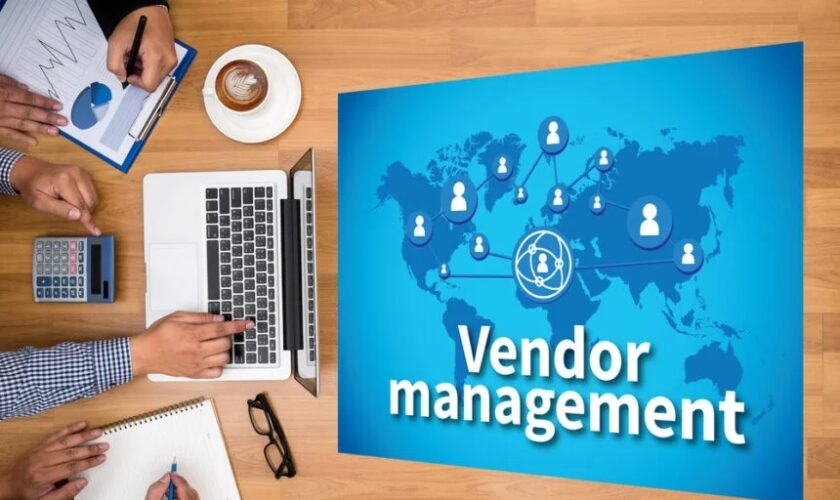The Basics of Vendor Management Systems
1. Understanding Vendor Management Systems
Vendor Management Systems (VMS) are software solutions designed to streamline and automate the process of managing suppliers or vendors. A VMS acts as a centralized platform that enables organizations to effectively manage their relationships with vendors, from the initial onboarding process to ongoing performance evaluation and payment processing.
With a VMS in place, businesses can efficiently handle the entire vendor lifecycle, including vendor selection, contract management, order processing, invoicing, and compliance monitoring. By automating these processes, organizations can reduce manual administrative tasks, improve vendor relationships, and achieve greater operational efficiency.
2. Benefits of Implementing a Vendor Management System
Implementing a VMS vendor management system can yield numerous benefits for organizations across various industries. Here are some key advantages:
Cost Savings: VMS software helps organizations optimize their procurement processes, negotiate better contracts, and track spend, leading to cost savings.
Efficiency and Automation: VMS automates manual tasks, such as vendor onboarding, invoice processing, and payment reconciliation, improving efficiency and reducing errors.
Vendor Compliance: A VMS enables organizations to ensure that their vendors comply with regulatory requirements, industry standards, and internal policies.
Data Visibility and Reporting: With a VMS, organizations gain real-time visibility into vendor performance, financials, and compliance, enabling better decision-making and strategic planning.
Improved Vendor Relationships: By centralizing vendor information and enhancing communication, a VMS helps foster stronger relationships with vendors, leading to improved collaboration and performance.
3. Key Features and Functionalities of VMS
A vendor management system typically offers a range of features and functionalities to support the effective management of vendors. Some key features include:
Vendor Onboarding: A VMS facilitates the streamlined onboarding of new vendors, including capturing vendor information, verifying compliance, and managing the necessary documentation.
Contract Management: VMS software allows organizations to store and manage vendor contracts, ensuring compliance with terms and conditions, tracking renewals, and facilitating contract negotiations.
Order Management: With a VMS, organizations can efficiently manage the ordering process, from creating purchase orders to tracking delivery and managing inventory.
Invoice and Payment Processing: VMS provides automated invoice processing capabilities, including invoice validation, approval workflows, and electronic payment processing.
Performance Monitoring: A VMS enables organizations to track and evaluate vendor performance based on predefined metrics, such as on-time delivery, quality, and customer satisfaction.
Analytics and Reporting: VMS software offers advanced reporting and analytics capabilities, allowing organizations to analyze vendor data, identify trends, and make data-driven decisions.
Choosing the Right Vendor Management System
1. Assessing Your Organization’s Needs
Before selecting a vendor management system, it’s essential to assess your organization’s specific needs and requirements. Consider the following factors:
Scope: Determine the scale of your vendor management needs, such as the number of vendors, complexity of contracts, and volume of transactions.
Integration: Evaluate your existing systems and technologies to identify whether the VMS should integrate seamlessly with them.
Customization: Consider whether the VMS can be tailored to meet your organization’s unique workflows, processes, and reporting requirements.
Scalability: Assess the scalability of the VMS to accommodate future growth and expansion.
Budget: Determine your budget and evaluate the cost-effectiveness of different VMS options.
2. Evaluating VMS Providers
When selecting a VMS provider, it’s crucial to conduct a thorough evaluation to ensure compatibility with your organization’s needs. Consider the following aspects:
Experience and Reputation: Research the provider’s track record, customer reviews, and industry reputation to gauge their credibility and reliability.
Industry-specific Functionality: Evaluate whether the VMS offers features that cater to your industry’s unique requirements or compliance standards.
Client Support: Explore the provider’s support offerings, including implementation assistance, training, and ongoing technical support.
Security and Compliance: Ensure that the VMS adheres to industry security standards and compliance regulations to protect your organization’s data.
3. Considerations for Integration and Scalability
Integration and scalability are crucial factors to consider when implementing a VMS:
Integration: Assess the compatibility of the VMS with your existing systems, such as enterprise resource planning (ERP) software, customer relationship management (CRM) tools, and accounting systems. Seamless integration ensures data consistency and eliminates manual data entry.
Scalability: Choose a VMS that can easily accommodate your organization’s growth plans and handle increasing vendor volume without compromising system performance.
API and Data Exchange: Evaluate whether the VMS supports integration through APIs (Application Programming Interfaces) or other data exchange methods, allowing seamless communication with other systems.
User Interface and User Experience: Consider the usability and intuitiveness of the VMS interface to ensure that it is user-friendly for both internal users and vendors.
Implementation and Integration of Vendor Management Systems
1. Planning and Preparing for VMS Implementation
Effective planning and preparation are crucial for successful VMS implementation. Consider the following steps:
Set Clear Objectives: Define the goals and objectives of implementing a VMS, such as improving vendor management processes, reducing costs, or enhancing compliance.
Map Existing Workflows: Evaluate your current vendor management workflows and processes to identify areas for improvement and determine how the VMS will fit into your existing operations.
Data Migration: Plan and execute the migration of vendor data from existing systems to the VMS, ensuring data accuracy and integrity.
Training and Communication: Develop a comprehensive training plan to ensure all relevant staff members are proficient in using the VMS. Communicate the benefits of the new system to stakeholders.
2. Essential Steps for a Successful VMS Integration
Integrating a VMS with existing systems requires careful planning and execution. Follow these essential steps:
System Assessment: Evaluate your current systems’ capabilities and infrastructure to determine the integration requirements and potential challenges.
Data Mapping: Create a data mapping plan to ensure seamless data transfer and integration between the VMS and other systems.
Testing and Validation: Conduct thorough testing and validation to ensure data accuracy, system functionality, and seamless integration with other systems.
Go-Live and Post-Implementation Support: Plan and execute the go-live of the VMS integration, providing ongoing support to address any post-implementation issues or user queries.
3. Overcoming Challenges in Implementation and Integration
Implementing and integrating a VMS can present certain challenges. Here are some strategies to overcome them:
Change Management: Invest in change management activities, including clear communication, training, and stakeholder engagement, to ensure smooth adoption of the new system.
Data Cleansing and Migration: Prioritize data cleansing and migration to ensure data accuracy and integrity during the transfer from existing systems to the VMS.
Technical Support: Establish a strong support system, including internal IT resources and external vendor support, to address technical challenges during the implementation and integration phases.
Best Practices for Optimizing Vendor Management Systems
1. Streamlining Vendor Onboarding and Offboarding Procedures
Efficient vendor onboarding and offboarding processes are essential for effective vendor management. Consider the following best practices:
Standardized Onboarding: Establish a standardized onboarding process, including necessary documentation, compliance checks, and orientation sessions to ensure vendors align with your organization’s requirements.
Automated Workflows: Utilize workflow automation to streamline approval processes, such as vendor setup and contract review, reducing manual tasks and ensuring timely completion.
Regular Performance Evaluation: Continuously evaluate vendor performance to identify areas for improvement and address underperforming vendors promptly.
2. Enhancing Vendor Performance and Relationship Management
Building strong vendor relationships and enhancing vendor performance can significantly benefit your organization. Consider the following best practices:
Establish Clear Expectations: Clearly communicate your organization’s expectations to vendors, including performance metrics, service level agreements, and compliance requirements.
Regular Communication: Foster open and transparent communication channels with vendors to address any issues, concerns, or potential opportunities for improvement.
Incentives and Rewards: Implement incentive programs or reward systems to incentivize vendors who consistently meet or exceed performance expectations.
3. Leveraging Data Analytics to Drive Decision Making
Data analytics plays a crucial role in optimizing vendor management practices. Consider the following best practices:
Define Relevant Metrics: Identify key performance indicators (KPIs) related to vendor management, such as cost savings, on-time delivery, and quality, to track and measure performance accurately.
Data Visualization: Utilize data visualization tools to present complex vendor data in a visually appealing and easily understandable format, enabling stakeholders to make informed decisions.
Data-Driven Continuous Improvement: Regularly analyze vendor data to identify trends, opportunities, and areas for improvement, enabling proactive decision-making and process optimization.
By following these best practices, organizations can maximize the value derived from their vendor management systems and drive operational excellence.
FAQ
Question: What is a Vendor Management System (VMS)? – A Vendor Management System is a software solution that automates the process of managing vendors and suppliers. It acts as a centralized platform for organizations to effectively manage relationships with vendors, from onboarding to payment processing.
Question: What are the benefits of implementing a Vendor Management System (VMS)? – Implementing a VMS can lead to cost savings, efficiency, vendor compliance, data visibility, and improved vendor relationships. It helps optimize procurement processes, automate manual tasks, ensure vendor compliance, provide real-time visibility into vendor performance, and foster stronger vendor relationships.
Question: What are the key features and functionalities of a VMS? – A VMS typically offers features such as vendor onboarding, contract management, order processing, invoice and payment processing, performance monitoring, and analytics. These functionalities streamline vendor management processes and provide organizations with better control and visibility over their vendor relationships.
Question: How do I choose the right Vendor Management System for my organization? – When choosing a VMS, assess your organization’s needs, evaluate VMS providers based on experience and industry-specific functionality, and consider integration and scalability. Factors to consider include the scope of your vendor management needs, integration with existing systems, customization options, scalability, and budget.
Question: What are the best practices for implementing and integrating a Vendor Management System? – To ensure successful implementation and integration of a VMS, it is essential to set clear objectives, map existing workflows, plan data migration, provide comprehensive training, assess system compatibility, create data mapping plans, conduct thorough testing, and plan for post-implementation support.
Question: What are the common challenges in implementing and integrating a Vendor Management System? – Common challenges in VMS implementation include change management, data cleansing and migration, and technical support. To overcome these challenges, invest in change management activities, prioritize data cleansing and migration, and establish a strong support system.
Question: How can I optimize my Vendor Management System? – Best practices for optimizing a VMS include streamlining vendor onboarding and offboarding procedures, enhancing vendor performance and relationship management, and leveraging data analytics for decision-making. This involves establishing standardized onboarding processes, utilizing workflow automation, establishing clear expectations, fostering regular communication with vendors, and utilizing data analytics to drive continuous improvement.
Question: How can data analytics be leveraged in vendor management? – Data analytics can be leveraged in vendor management to define relevant metrics, utilize data visualization tools, and drive data-driven continuous improvement. By identifying key performance indicators, visualizing complex data, and regularly analyzing vendor data, organizations can make informed decisions, track performance accurately, and optimize vendor management processes.
Useful Resources:
- com – Provides articles and resources on vendor management systems and related topics in IT management.
- com – Offers an overview of vendor management systems and their benefits, along with related articles on supply chain management.
- com – Provides research and insights on vendor management systems, including reports, articles, and market analysis.
- com – Offers industry news, insights, and resources on vendor management systems and procurement strategies.
- com – Provides articles and case studies on vendor management systems and other topics related to supply chain management.
- com – Offers information and resources on vendor management systems and procurement solutions for businesses.
- org – Provides resources and articles on procurement practices, including vendor management systems and supplier relationship management.
- org – Offers education and resources on supply chain management, including vendor management systems and best practices.













